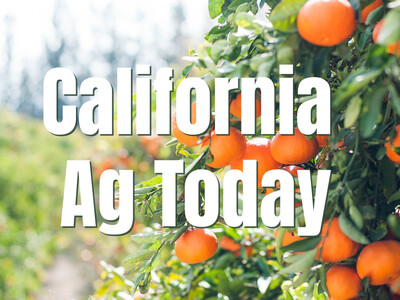Ranchland lost
Idaho lost farmland, and farms, at an alarming rate from 2017 to 2022.According to the 2022 Census of Agriculture, 144,000 acres of working lands in Idaho were taken out of production during that five-year period.
Working lands include cropland, pasture and rangeland, and private forests.
That represents a 1.2 percent drop from the 11.69 million acres of total working lands in the state in 2017.
Nationwide, 20 million acres of land were taken out of production from 2017 to 2022, according to the ag census. That was a 2.2 percent drop from 900 million acres in 2017.
During that five-year period, 2,119 farms and ranches in Idaho went out of business, which amounts to more than one operation in the state closing every day during that time.
Nationally, the U.S. lost 142,000 farms from 2017 to 2022, according to the ag census.
Many or most of those shuttered farms, both in Idaho and nationally, were smaller farms and ranches and, percentage-wise, account for little of the state’s and nation’s overall farm production.
Idaho still has 22,877 farms and total production of the state’s main agricultural commodities – potatoes, hay, milk, beef, wheat, barley, sugar beets, onions, hops, etc. – remains steady, if not increasing.
But the loss of agricultural operations and working lands from 2017 to 2022 is still not welcome news for the state’s farm and ranch community and the rate of that loss is on a bad trajectory, said Idaho Farm Bureau Federation President Bryan Searle.
“It’s terribly sad news when any farm or ranch goes out of business, regardless of size,” he said. “And the total loss of land in farming is troubling.”
Given Idaho’s rapid population growth, those numbers didn’t come as a major shock to many people involved in the state’s agricultural industry.
“It’s not slowing down,” said Canyon County farmer Sid Freeman, who took a drive recently along Cherry Lane from Canyon County to Ada County. “I had no idea where I was at. I had to look at the road signs to know where I was at. Things are moving extremely fast. I don’t see it slowing down.”
“The most disturbing thing to me is the loss of total acres in farming,” said New Plymouth farmer Galen Lee. “A lot of that is good productive row crop land, too. Once those acres are developed, they don’t ever go back into farm production.”
Lee tried to buy some farm ground that he currently rents but the landowner got a better offer from a developer.
“With development all around you, it gets harder and harder and harder to keep farming,” he said.
“I drive all over this state and I see the growth, so I’m not surprised by the ag census data,” said David Anderson, the Idaho program manager for American Farmland Trust, which tracks the loss of working lands in the U.S.
“And it’s not just development pressure, he added. “Idaho’s working landowner families are shouldering market, operational, regulatory, and succession pressures. The data tells us that it’s the small and middle-sized operations that are giving up and selling. The current system is not working in their favor.”
The value of land for urban development pushes out small farms close to town, said Twin Falls County Farm Bureau President Larry Hollifield. “You get more money selling it for houses versus selling it for farmland.”
The rapid loss of farm ground “is shocking but as I look around, there is a lot of farm ground in this community being sold for housing,” said Jefferson County Farm Bureau President Alan Clark.
He said there were a couple plots of farm ground he had hoped to buy but developers offered an amount that priced him out.
The developer offered more than three times what Clark could offer.
“There’s no way we can compete with that,” he said.
Anderson, who grew up working on his family’s ranch in the Lemhi Valley, noted that AFT’s Farms Under Threat: 2040 report estimates that more than 10 square miles of Idaho’s farms and ranches are permanently converted to development each year, and with continued population growth, the pace is accelerating.
“When you look at this most recent ag census data, the loss of land in production suggests that a significant amount of that land is poised to be converted permanently,” he said.
He said the recent data “reinforces the fact that we are at a point of runaway sprawl. That is an indication that the agricultural protections currently afforded in the state’s Local Land Use Planning Act, we’ve outgrown them. They’re not working for us anymore.”
“The challenge we have is that once we’re in a runaway sprawl state, then we are changing the land value economics in the path of the growth so quickly that a lot of our working landowners don’t necessarily have the resources to be able to withstand the development pressure that’s coming at them,” he added. “I think the overall challenge we’re facing is operation viability. It is easier for landowners in the path of growth to cash out rather than shoulder in and say, ‘I’m going to set this up for the next generation. I want to keep farming. My kids want to keep farming.’”
Anderson said there are possible solutions to stop or at least stem the rate of farm and farmland loss in Idaho. It’s just a matter of having the will to do what it takes to make a difference.
“It’s going to take a big toolbox because it’s not a one-size-fits-all answer,” he said. “Every farm, every ranch, is uniquely its own. So we’ve got to be able to meet our working landowners halfway with a toolbox and say, ‘You want to stay in operation and your kids want to come home and take over. OK, I think this tool, this tool and this tool are what’s going to work best for you to do that.”
Any solutions will have to respect private property rights, he said, a train of thought that lines up with Idaho Farm Bureau Federation policy.
“A farmer should be able to sell his land to the highest bidder,” said Freeman. “Private property rights should never be taken away from any individual.”
That said, he added, land comes with a specific land use and citizens can make sure county commissioners follow their county’s comprehensive plan to try to avoid fragmentation of highly productive farm and ranch country with housing subdivisions.
Clark said there has to be some way of stemming the loss of farmland without violating private property rights.
“I definitely believe in property rights. It is your property and you can do with it as you like,” he said. “But people need to understand, that’s where our food comes from.”
He would like to see more targeted growth, away from the most productive farmland.
The hot spots for farmland loss in the state are the Treasure Valley of southwestern Idaho, the Twin Falls area in southcentral Idaho, the Panhandle area in northern Idaho, and the Idaho Falls to Teton corridor in eastern Idaho.
The good news, Anderson said, is that more people in the state are beginning to understand what is happening and the stakes involved.
“There are a lot more people in Idaho, especially elected officials and decision-makers, that are now looking at this data and understanding what it means,” he said. “The conversation around protecting our agricultural economy is being elevated. More people are realizing that, ‘OK, we’re at a tipping point.’ It’s no longer, ‘Oh, let’s just kick that down the road anymore.’”
A farmland preservation bill supported by IFBF was passed by the Idaho Legislature this year. It allows for the creation of Agricultural Protection Areas.
An APA is a voluntary land-use designation that is requested by a landowner of their county commissioners. The landowner receives certain non-monetary benefits or incentives that protect the viability of the operation.
There is the possibility of financial incentives being added to the APA at some point in the future if lawmakers agree to that.
More than two years ago, IFBF voting delegates, who are all farmers or ranchers, adopted a policy supporting state legislation to protect agricultural lands if it is voluntary and incentive based.
That led to the creation of a farmland preservation committee that created and endorsed the APA concept.
The APA bill is just the start of addressing the issue, Searle said.
“Finding ways to stem the rapid loss of farmland that is occurring in some parts of the state is one of Idaho Farm Bureau Federation’s highest priorities,” he said.
IFBF Director of Governmental Affairs Braden Jensen said it was good to see the wide support for the APA bill in the legislature.
“It is important that our policy makers continue to prioritize the needs of the ag industry,” he said. “When it comes to having robust farms and ranches, there are a couple of resources that are irreplaceable – land and water.”













